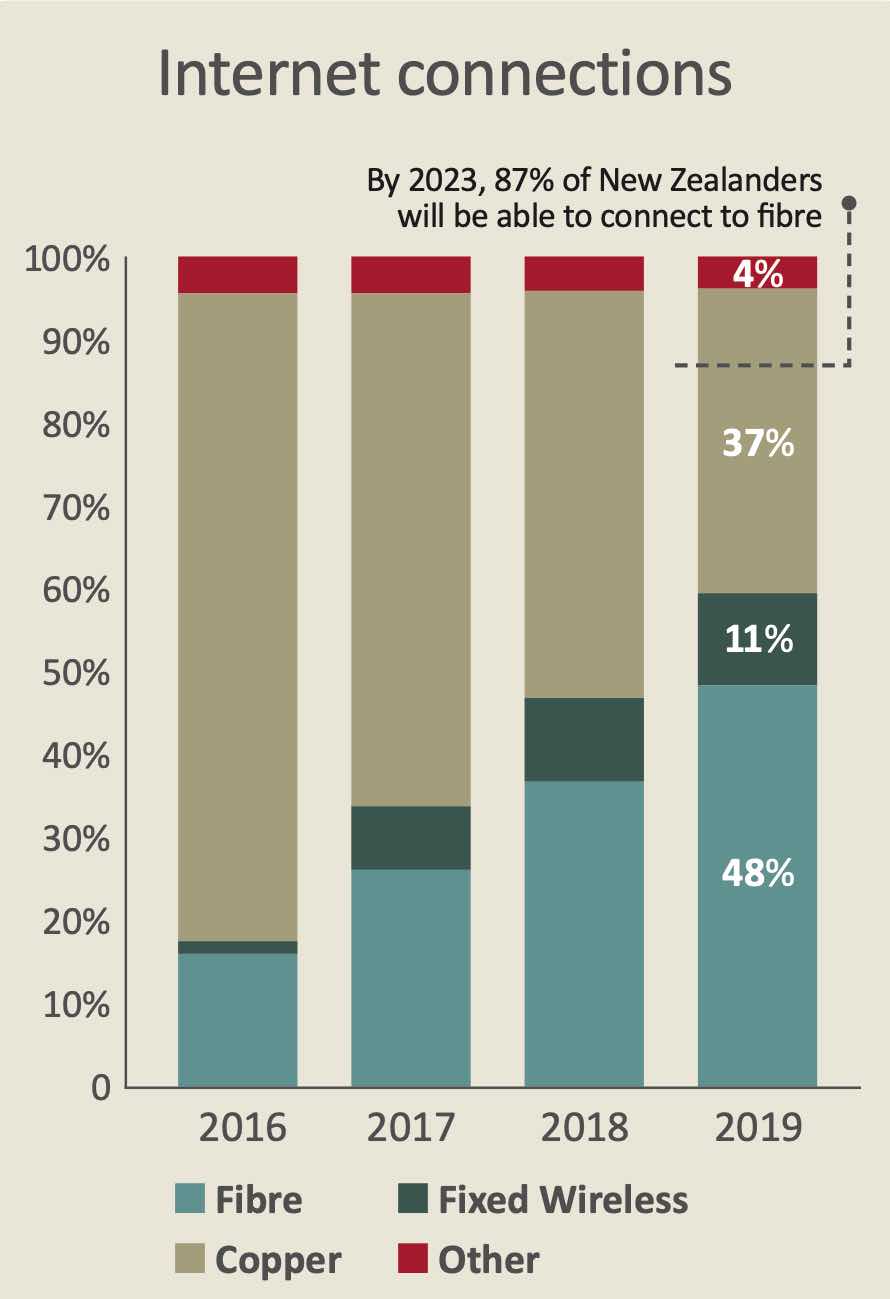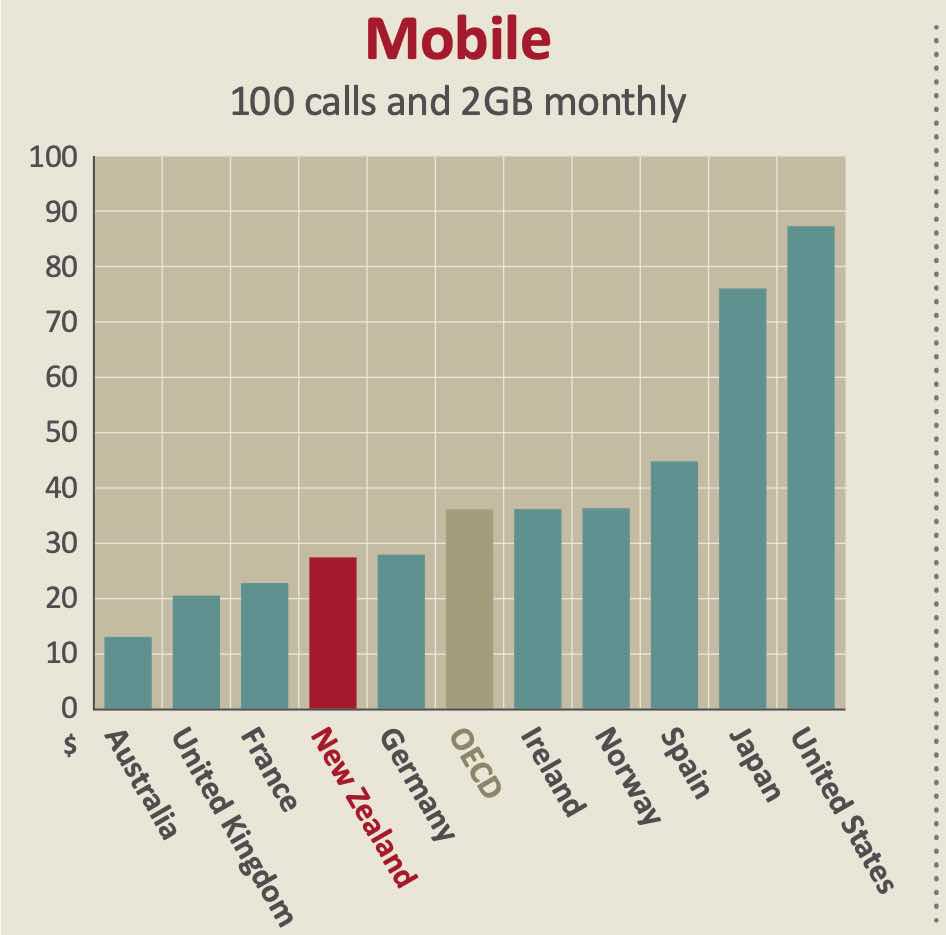It’s official: NZ fibre overtakes copper
At the end of September, fibre companies had 880,000 premises connected to their networks. There were 581,000 copper connections. Fibre connections were up 31 per cent on the year earlier. Copper connections were down 23 per cent.
These numbers come from the Commerce Commission’s Annual Telecommunications Monitoring Report. Last year fibre officially overtook copper as New Zealand’s connection technology.
This happened a couple of months before the first phase of New Zealand’s UFB fibre build was completed. When the project started a decade earlier the plan was to have 20 per cent of connections. The planners thought fibre overtaking copper would happen sometime in the distant future.

Fixed wireless broadband
Fixed wireless broadband is also up. It climbed 14 per cent in the year to September 2019 to reach a total of 188,000 connections. What the Commerce Commission does not reveal is that Spark back-pedalled on fixed wireless sales in the run up to the Rugby World Cup. Without that, the growth would have been higher.
Telecommunications Commissioner Dr Stephen Gale says; “New Zealanders are increasingly moving to the fibre broadband network. This trend is set to continue with nearly three-quarters of a million homes and businesses yet to switch in areas where fibre is available to be connected”.
There’s a curious section in the media statement about broadband prices. Gale says; “…Prices for a medium use fixed-broadband plan (150GB/30Mbps) and voice bundle have remained at $75 in 2019. As the OECD average price has dropped since last year, New Zealand is now more expensive than the international average.”
Well yes, but the plan in question is a strange one to choose. Few New Zealand customers have 30Mbps plans and the most popular plans have unlimited data. You can buy an uncapped gigabit fibre plan for $85 a month. I’ve no international comparative data to quote, but this is lower than the average price around the world.
Competitive mobile plans
Elsewhere in the report the Commerce Commission notes New Zealand’s mobile plans remain competitive by international standards.
Gale says; “New Zealand’s mobile plan prices are below the OECD average for all plan types we measure. For instance, a medium use plan of 100 calls and 2GB of data costs $28, 24 per cent below the international average”.

The Commerce Commission also looks at telco market share. It notes smaller companies are growing their share of fixed broadband at the expense of the big names.
“Increased competition in the market is good for consumers. In the past year we’ve seen encouraging signs with small retailers like MyRepublic and Stuff Fibre growing their market shares. Overall, smaller retailers’ market share grew from 8 per cent to 11 per cent in 2019, with customers largely being wooed over from Spark and Vodafone.”
Member discussion